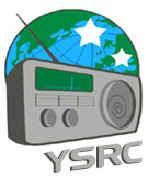|
|
 |
|
What
is Short wave? |
 |
|
RADIO
FREQUENCY |
 |
|
short•wave
Pronunciation: (shôrt'wāv')
Definition :
1. Elect.a radio wave shorter than that used in AM
broadcasting, corresponding to frequencies of over 1600
kilohertz: used for long-distance reception or
transmission.
2. Physics. An electromagnetic wave with a wavelength of
approximately 200 meters or less, especially a radio
wave in the 20 to 200 meter range.
Shortwaves:
short
waves, radio waves whose frequencies range from about 3
to 25 megahertz (Mhz), corresponding roughly to the
high-frequency band (see radio frequency). When they
impinge on certain layers of the ionosphere, short waves
are largely reflected back toward the earth. By one or
more reflections between the earth and the ionosphere, a
short-wave radio signal can be received at long
distances from the transmitter.
|
|
DXING
|

|
|
DXing
- Most
listeners are content to listen to the stronger stations,
though there is also another equally interesting aspect of the
hobby, which seems to suit those with more of a technical
interest. This is termed DXing. The term is not defined in any
of the dictionary but if we let D stand for Distance and X, as
in mathematics, stand for Unknown, then we see the term DXing
as meaning "listening to radio stations from an unknown
distance." A person engaged in the hobby is called a DXer
.
|
|
PROPOGATION
|
|
 |
|
Radio waves, like
light waves and all other forms of electromagnetic radiation,
normally travel in straight lines. Obviously this does not
happen all the time, because long - distance communication
depends on radio waves traveling beyond the horizon. How radio
waves propagate in other than straight-line paths is a
complicated subject, but one that need not be a mystery. This
page provides basic understanding of the principles of
electromagnetic radiation, the structure of the Earth's
atmosphere and solar-terrestrial interactions necessary for a
working knowledge of radio propagation. More
details about radio propagation and other technical info can
be found at ARRL-The National Association for Amateur Radio
technical information service page :
Enter
here!
|
|
|
|
|
Radio
frequency, range of electromagnetic waves with a frequency
or wavelength suitable for utilization in radio communication.
Some of these waves serve as carriers of the lower-frequency audio
waves; others are modulated by video or digital information. Short
waves have relatively high frequencies; long waves have relatively
low frequencies. Radio waves are identified by their frequencies,
expressed in kilohertz (kHz), i.e., thousands of cycles per
second, in megahertz (MHz), i.e., millions of cycles per second,
or in gigahertz, i.e., billions of cycles per seconds. Signals in
the amplitude modulation (AM) broadcast band have frequencies
ranging from 540 to 1,800 kHz. Frequency modulation (FM) broadcast
frequencies range from 88 MHz to 108 MHz. A range, or band, of
radio frequencies is regularly assigned to a broadcasting station
or service by the nation in which it operates. In the United
States, the Federal Communications Commission is responsible for
that task. Countries cooperate on on a worldwide basis through the
International Telecommunications Union, which holds periodic
conferences.
Informative Article on Shortwave Radio, International Broadcasting
|
|
Enter
here!
|
|
|
Grey
Line Map
|

|
|
The
"grey line" is a band around the Earth that separates
daylight from darkness. Propagation along the grey line is
very efficient. One major reason for this is that the D
layer, which absorbs HF signals, disappears rapidly on the
sunset side of the grey line, and it has not yet built upon the
sunrise side. Ham radio operators and shortwave listeners can
optimize long distance communications to various areas of the
world by monitoring this band as it moves around the globe.
This map will
automatically refresh every 5
minutes.
Enter
here!
|
|
WORLD TIME SERVER, ANY TIME, ANY WHERE
|
|
|
|
40
Hastinapuri Colony, Raghavendra Residency-FF4, Sainikpuri, HYDERABAD 500
094, Andhra Pradesh, India |
